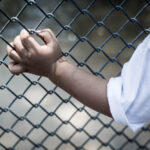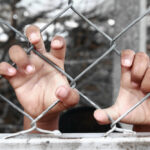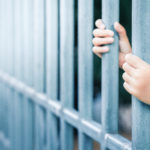NSW Parliament to Consider Raising the Age of Criminal Responsibility to 14
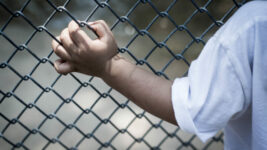
NSW continues to lockup children as young as 10 years old. Indeed, the entire nation of Australia does. And rather than term it as imprisonment, it’s sanitised as youth justice.
Over 2019-20, this state detained 105 children 13 years or under, whilst nationwide that figure grew to 499 children.
“They do not have their pen licences, let alone their driver licences,” NSW Greens MLC David Shoebridge said in state parliament last week. “Some of them spend their first night away from their families in a prison cell. They are still kids.”
During our nation’s last major review before the UN Human Rights Council in January this year, 31 member countries recommended Australia raise the age of criminal responsibility from 10 to 14 years old, in line with the advice of the UN Committee on the Rights of the Child.
And as Australia is a settler colonial nation, it is somewhat unsurprising, but utterly deplorable, that this practice continues to disproportionately target First Nations children. Over 2019-20, 56 percent of kids under 14 in NSW gaols were Indigenous, while across the nation that rose to 65 percent.
But the Morrison government officially rejected the UN advice in July. And state attorneys general are stalling on reform and rather attempting to water it down.
So, Shoebridge introduced some simple and humane laws into NSW parliament last week that make a lot of sense.
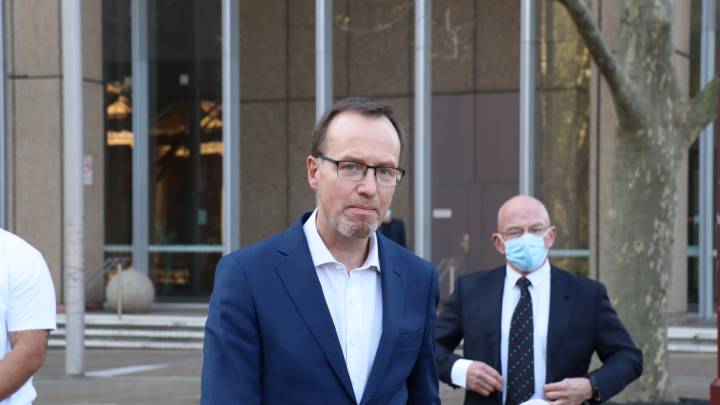
Scarified for power
“We’ve listened to the evidence. We’ve seen the extremely well-informed campaign,” Shoebridge said. “We’ve looked at the resolutions coming from the Committee on the Rights of the Child, and it all points in the same direction – that the minimum age for criminal responsibility should be 14.”
“You would think if parliament was guided by the evidence, it would be a near unanimous position,” he continued.
“Unfortunately, this is being churned through the very toxic ‘law and order’ politics that we see in state jurisdictions across the country.”
This toxic political climate sees the NSW Coalition government having invested billions in a prison boom over the last half decade, as the prisoner population rises to all-time highs, whilst most crime rates have been on a significant and continuing decline since the turn of the century.
So, in order to score tough on crime votes, the Perrottet government continues to scar kids.
Yet, children under the age of 14 can’t comprehend the full implications of any actions of their action that may break the law. And sending them into detention hinders their cognitive development. So, in most cases, it guarantees they’re stuck in a cycle of crime and imprisonment.
“The likelihood is that if Liberal attorney general Mark Speakman moved to take the age to 14, he would be met with a vicious political attack from Labor in combination with shock jocks on talkback radio and the Murdoch media,” Shoebridge told Sydney Criminal Lawyers.
A humane blueprint
As the Liberals and Labor appear to have no qualms about locking up kids as young as 10 as a means of attempting to gain the most seats in parliament, Shoebridge introduced the Children (Criminal Proceedings) Amendment (Age of Criminal Responsibility) Bill 2021 on 11 November.
To raise the age of criminal responsibility, the bill amends section 5 of the Children (Criminal Proceedings) Act 1987 (NSW), so it would read “it shall be conclusively presumed that no child who is under the age of 14 years can be guilty of an offence”. And then it goes a step further.
The private members bill inserts section 5A into the Act, which stipulates that the minimum age that a person can be imprisoned as a form of punishment for a criminal offence would be 16 years of age and it leaves open the avenue to impose noncustodial penalties.
In his second reading speech on the bill, Shoebridge outlined that most kids affected by this law are First Nations youth, and the rest are non-Indigenous children from disadvantaged or poorer backgrounds.
The MLC further added that opponents of raising the age often question whether there is any real alternative.
“The alternative is what happens to kids from wealthy backgrounds,” Shoebridge made clear. “It’s expensive lawyers and references from psychologists. It’s the kind of support that’s lavished on kids whose families can afford to pay for it. That’s what keeps them out of the criminal justice system.”
The Greens justice spokesperson also pointed out that rather than this state taking the lead, the ACT government has already committed to raising the age to 14. Capital Territory attorney general Shane Rattenbury said last month that the legislation to permit this will be introduced early next year.
And the ACT Legislative Assembly has conducted an inquiry into alternatives to custody, with its report suggesting that a multidisciplinary therapeutic panel be established to seek tailored alternatives to detention for kids, which will be accompanied by a new wraparound delivery service.
Stalling and watering down
At a mid-2020 meeting of Australian attorneys general, the nation’s chief lawmakers determined to postpone any decision on raising the age, whilst, late on Monday, they unofficially announced they’d decided to consider a watered down plan of raising the age from 10 to 12 years old.
“Governments discuss closing the disadvantage gap between First Nations people and the balance of the community,” Shoebridge said following this development. “But you can’t even pretend to be serious about that unless you stop putting First Nations kids in gaol when they’re 10, 11, 12 and 13.”
Tabled in April this year, the NSW Legislative Council report on First Nations overincarceration recommended that this state raise the age of criminal responsibility to at least 14.
However, Mark Speakman doesn’t seem to be listening to this advice or to the want of both the local and international community.
“These laws are part of that ongoing legacy of invasion and colonialism. That is a fundamental truth. And if you come from a poor or disadvantaged background no support is available and the answer is go directly to gaol,” Shoebridge said in conclusion.
“We know what the solution is, it’s to see an end to the deep class and race division within the criminal justice system.”


